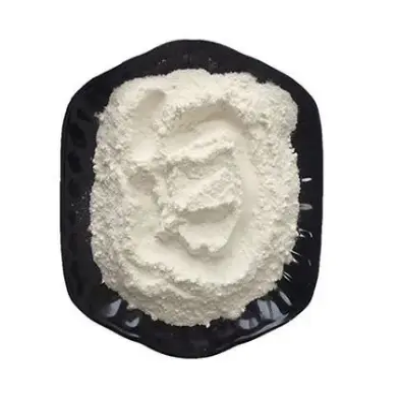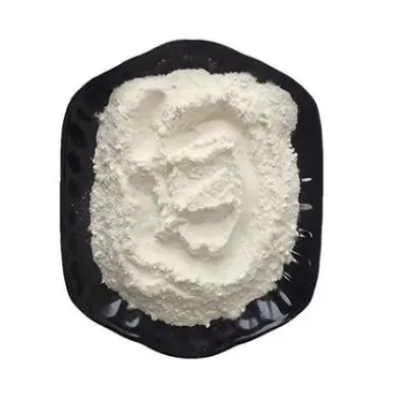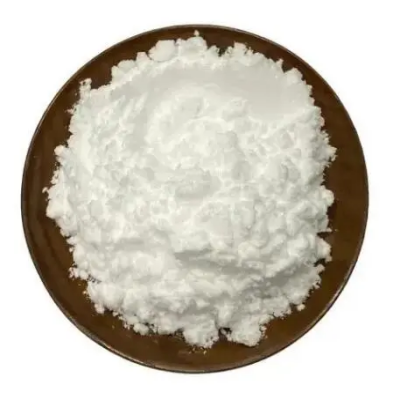-

Capastat sulfate (Capreomycin sulfate) CAS:1405-37-4
Capastat sulfate, also known as Capreomycin sulfate, is an antibiotic medication used in the treatment of multidrug-resistant tuberculosis (MDR-TB). It belongs to the class of antibiotics known as aminoglycosides and works by disrupting protein synthesis in susceptible bacteria, particularly Mycobacterium tuberculosis. Capastat sulfate is typically administered through injection and is considered an important component of MDR-TB treatment regimens.
-

Butirosin disulfate CAS:51022-98-1
Butirosin disulfate is an antibiotic derived from fermentation processes using the bacterium Bacillus circulans. It belongs to the aminoglycoside class of antibiotics and is known for its effectiveness against certain gram-negative bacteria. Butirosin disulfate acts by inhibiting protein synthesis in bacteria, ultimately leading to their death. This antibiotic is used primarily in veterinary medicine for the treatment of bacterial infections in animals.
-

S)-(+)-Camptothecin CAS:7689-03-4
(S)-(+)-Camptothecin is a natural alkaloid compound derived from the Camptotheca acuminata tree and other plant sources. It is known for its potent anticancer properties and has been studied for its potential in cancer therapy. (S)-(+)-Camptothecin acts as a topoisomerase inhibitor, interfering with DNA replication and ultimately leading to cancer cell death. This compound has garnered significant interest in the field of oncology due to its promising antitumor effects.
-

Capreomycin CAS:11003-38-6
Capreomycin is an antibiotic medication used in the treatment of tuberculosis, particularly for multidrug-resistant tuberculosis (MDR-TB). It belongs to the class of antibiotics known as aminoglycosides and works by inhibiting bacterial protein synthesis, targeting Mycobacterium tuberculosis. Capreomycin is administered through injection and is considered an important component of tuberculosis treatment regimens, especially in cases where standard first-line drugs are ineffective.
-

Capreomycin sulfate (Capastat sulfate) CAS:1405-37-4
Capreomycin sulfate, also known as Capastat sulfate, is an antibiotic medication primarily used in the treatment of multidrug-resistant tuberculosis (MDR-TB). It belongs to the aminoglycoside class of antibiotics and is effective against Mycobacterium tuberculosis. Capreomycin sulfate is administered via injection and plays a crucial role in combating drug-resistant strains of tuberculosis.
-

Carbenicillin disodium salt CAS:4800-94-6
Carbenicillin disodium salt is a broad-spectrum antibiotic belonging to the penicillin group. It is widely utilized in microbiology and biotechnology for its ability to inhibit the growth of bacteria by interfering with cell wall synthesis. Carbenicillin is offered in its disodium salt form, enhancing its solubility in aqueous solutions and making it suitable for various laboratory applications.
-

Bronopol (2-Bromo-2-nitro-1,3-propanediol) CAS:52-51-7
Bronopol, also known as 2-Bromo-2-nitro-1,3-propanediol, is a chemical compound used as a preservative in various personal care products and industrial applications. It is valued for its antimicrobial properties, which help inhibit the growth of bacteria, fungi, and yeast. Bronopol is commonly found in cosmetics, toiletries, cleaning agents, paints, and other products where microbial contamination needs to be controlled.
-

Cefadroxil CAS:50370-12-2
Cefadroxil is a first-generation cephalosporin antibiotic used to treat bacterial infections such as skin and soft tissue infections, urinary tract infections, pharyngitis, and tonsillitis. It effectively targets a wide range of bacteria and is available in various formulations, including capsules and oral suspension.
-

Aztreonam CAS:78110-38-0
Aztreonam is a monobactam antibiotic that is used to treat serious infections caused by susceptible bacteria. It works by inhibiting the synthesis of bacterial cell walls, leading to the disruption of the bacterial growth and ultimately killing the bacteria. Aztreonam is commonly prescribed for conditions such as urinary tract infections, lower respiratory tract infections, skin and soft tissue infections, and intra-abdominal infections. It is available in various forms including injection and inhalation, making it suitable for different patient needs.
-

Cefamandole sodium salt CAS:30034-03-8
Cefamandole sodium salt is a second-generation cephalosporin antibiotic with broad-spectrum activity against various bacterial pathogens. It is commonly used in the treatment of infections and is formulated for intravenous administration.
-

Cefoperazone CAS:62893-19-0
Cefoperazone is a third-generation cephalosporin antibiotic with potent activity against a wide range of Gram-negative bacteria. It is commonly used in clinical settings for the treatment of various infections and is available for parenteral administration.
-

Cefazolin sodium salt CAS:27164-46-1
Cefazolin sodium salt is a first-generation cephalosporin antibiotic with broad-spectrum activity against bacteria. It is commonly used in clinical settings for the treatment of various infections and is available in different formulations for intravenous or intramuscular administration.

